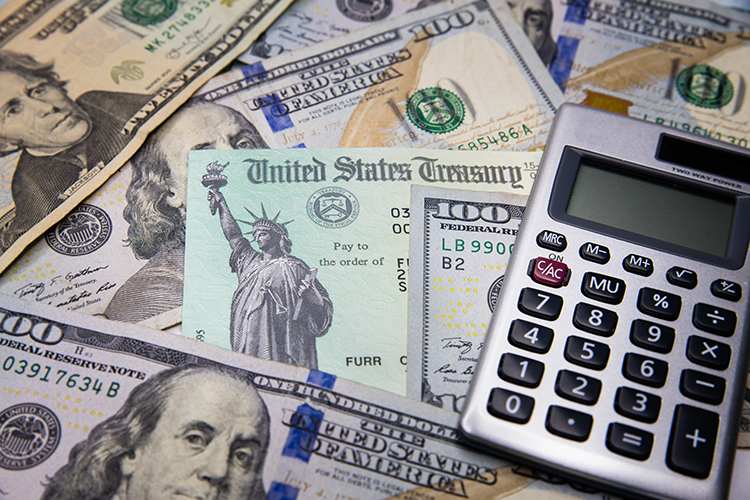States With The Highest And Lowest Sales Taxes
Jan 30, 2024 By Susan Kelly
Adding a sales tax to a transaction raises the item's final price, and you have to account for this tax in addition to the sales tax collected by your state. In addition to the state tax, some local governments also impose their own sales taxes, which can significantly increase the final price of a product.
If you don't want to pay a significant amount more at every checkout, you'll need to shop in places that don't have a sale tax, have a meager tax rate, or shop on a sales tax holiday. Based on sales tax rates in 2022, these are the greatest and worst places to live.
Some States Have the Lowest Sales Tax Rates

Five states (Delaware, Montana, New Hampshire, Alaska, and Oregon) don't impose any sales tax whatsoever on their residents, making them the clear frontrunners. There is no statewide sales tax, although some municipalities impose their own at a rate of about 1.76 percent across the state.
- 2.9% in Colorado
- At 4%, Alaska, Alabama, Georgia, Hawaii, New York, and Wyoming
- Missouri at 4.225%
- South Dakota and Oklahoma at 4.5%
- 4.75 percent in North Carolina
The States With The Highest Retail Sales Taxes

The opposite extreme consists of states with exceptionally high state sales tax rates. Some consumers will cross state boundaries to buy at tax-free or lower-tax establishments when these rates are very high. Many communities in Massachusetts have this problem since they are so close to tax-free New Hampshire. At 7.25 percent, California's sales tax rate is the highest of any state. As a result,
- Indiana, Mississippi, Rhode Island, and Tennessee at 7%
- Minnesota at 6.875%
- 6.85% in Nevada
- New Jersey at 6.625%
- Washington, Arkansas, and Kansas at 6.5%
Are There Taxes on All Purchases?
Food and other necessities like medicine and clothes are usually excluded from sales tax in the states that have relatively low rates. Tobacco, alcohol, and fuel are all subject to more outstanding taxes in certain conditions than in others.
As of 2020, New Hampshire will tax tobacco products at a rate of $1.78 per package for purchases of 20 cigarettes and $2.23 per package for purchases of 25 cigarettes. The good news is that Wyomingites can take heart. As of 2022, the state's beer excise tax was the lowest in the US, at $0.02 per gallon.
When The State and Municipal Taxes Are Considered
Local sales taxes are legal in 38 states. Among the states that do, Alaska has the lowest combined rate, followed by Hawaii, Wisconsin, Wyoming, and Maine. Four other states have lower registration rates than Hawaii: Wyoming (5.22%), Wisconsin (5.43%), and Maine (5.50%).
As of 2022, the total rates of state and local taxes in Arkansas (9.47%), Washington (9.29%), and Alabama (9.24%) are all in the top five highest in the US.
To assist fund highway and road repair, voters in Colorado Springs, Colorado approved a 3.12% increase in the municipal sales tax beginning in 2016, with the higher rate sunsetting after five years. 5 As of January 2021, that rate was reduced to 3.07%. The city's 8.20% sales and use tax rate is relatively high.
Other Taxes Serve as Offsets
Taxes on purchases are only one method that state governments may get at the money they need to function. While some states take, others give. They rely heavily on one form of taxation while sparing locals in other areas.
While Tennessee's total state and local sales tax rate is high, it is partially mitigated by the absence of an income tax. If you make a living there, you won't have to worry about paying taxes. 7 The state of New Hampshire has no sales tax, yet residents must pay very high property taxes.
Paying No Income Tax States
Every one of us hopes for a reduced tax burden. One possible solution is to move to a tax-free state. There is currently no state income tax in Alaska, Florida, Nevada, South Dakota, Tennessee, Texas, or Wyoming.
Until 2021, Tennesseans had to pay taxes on their share of dividends and interest earnings. However, the state's "Hall income tax" was eliminated on January 1.
2 Outside of California, New Hampshire levies interest and investment income but plans to eliminate the tax by 2023. By 2027, there will be nine states with no personal income tax.
Bottom Line
However, despite the difficulties, several no-tax states have managed to strike a good balance between low taxes, affordability, and offering a nice place to live. Some people have it easier than others. One thing is sure, though: a state's tax rate is only one part of the puzzle when figuring out how much it costs to live there.








